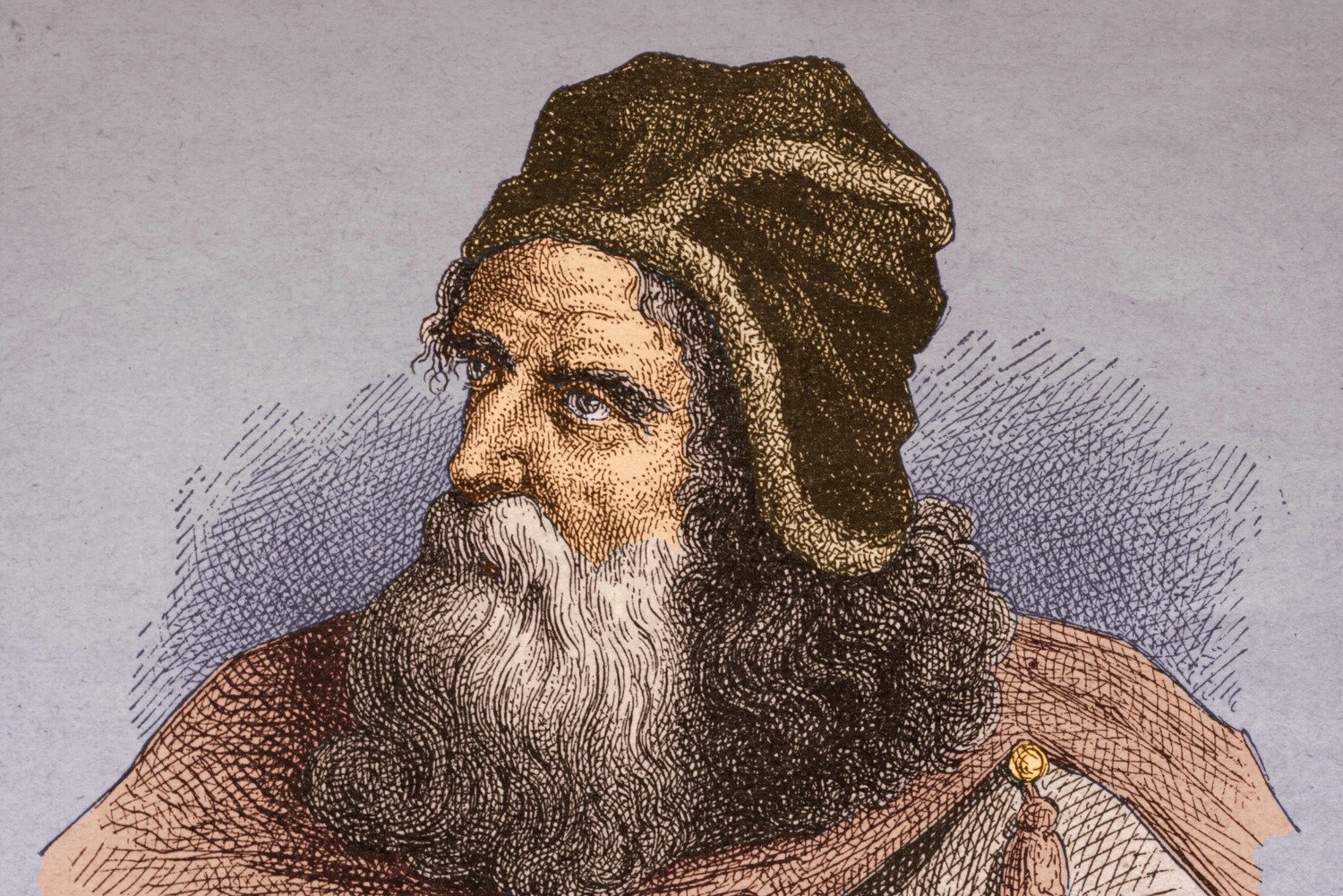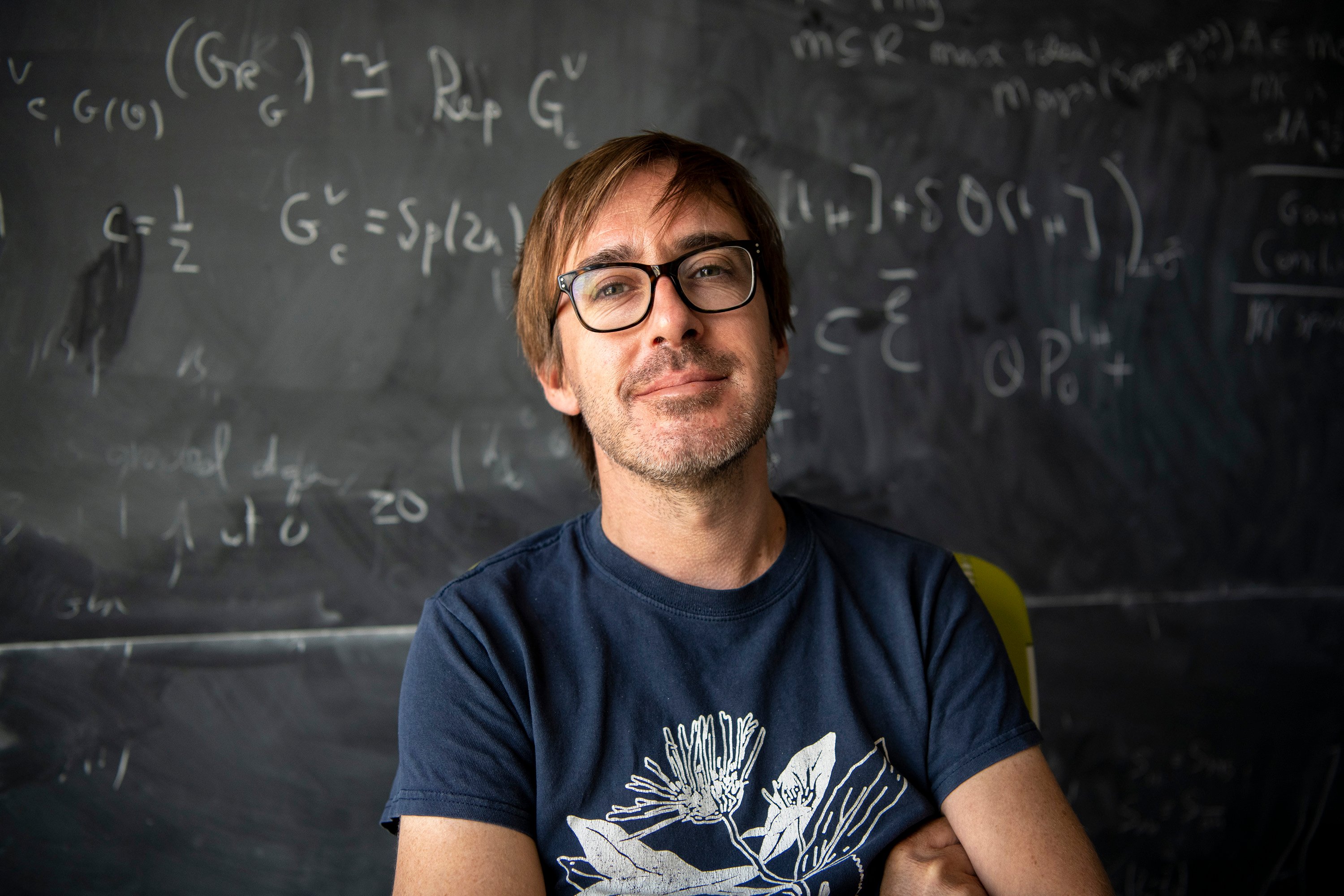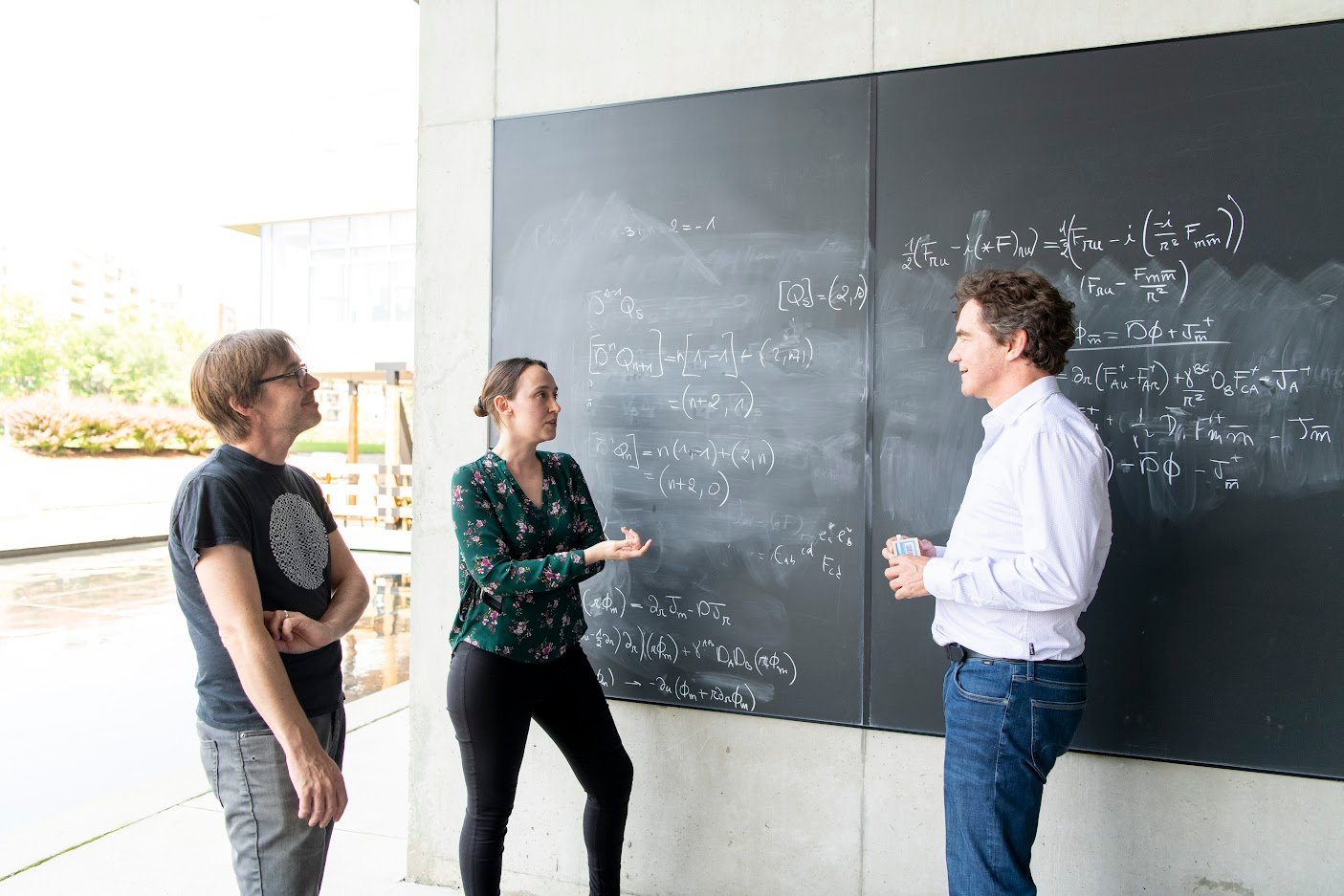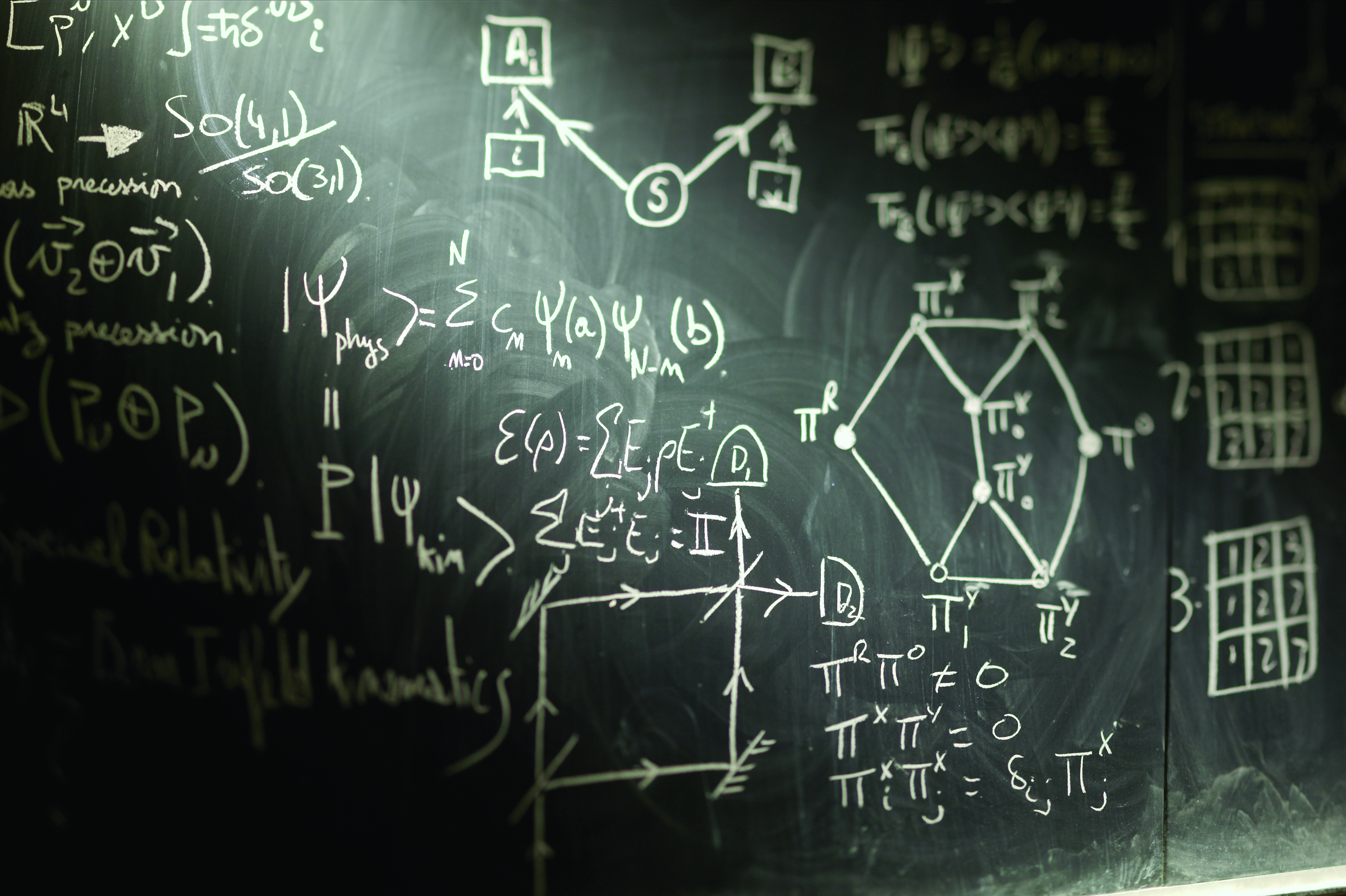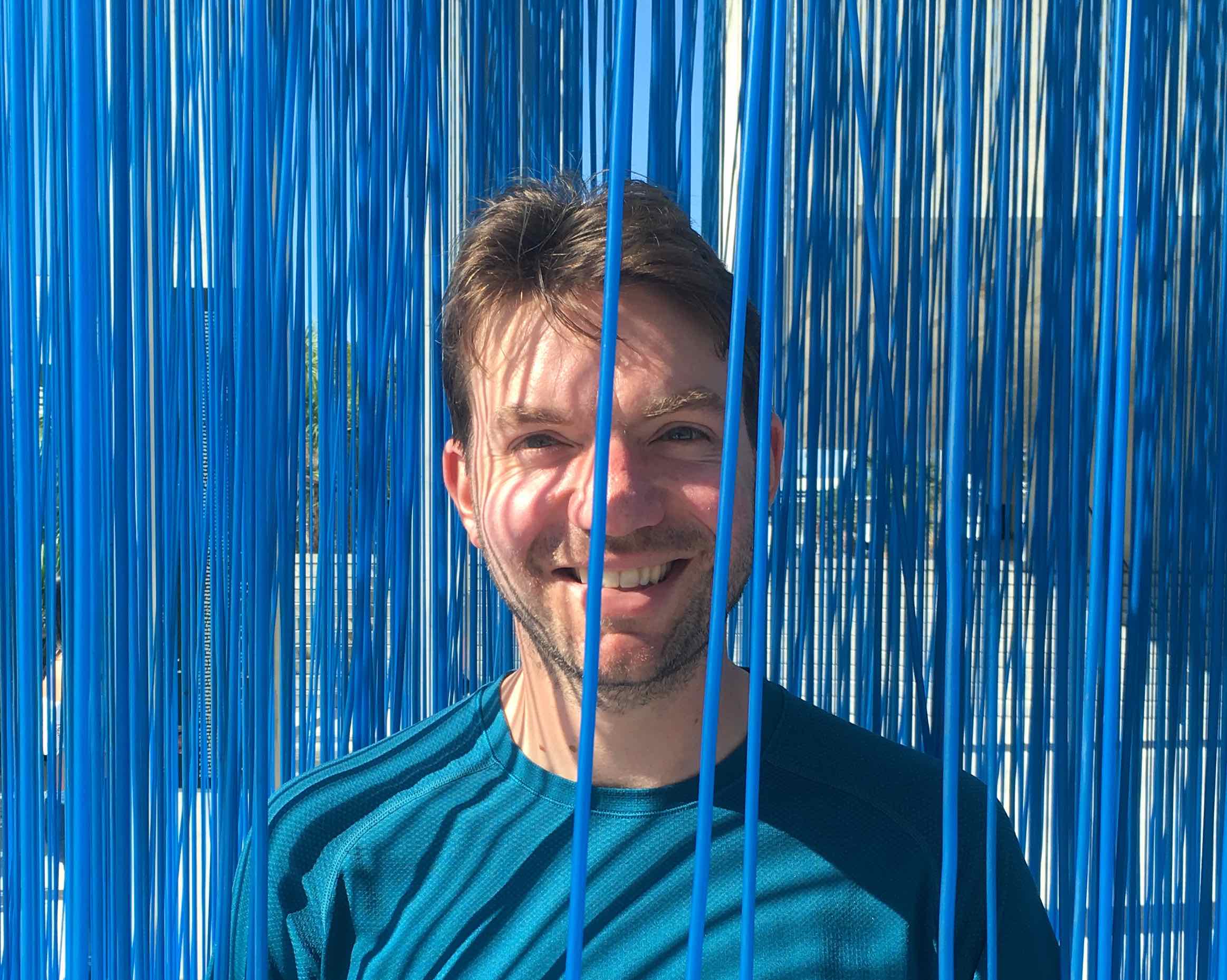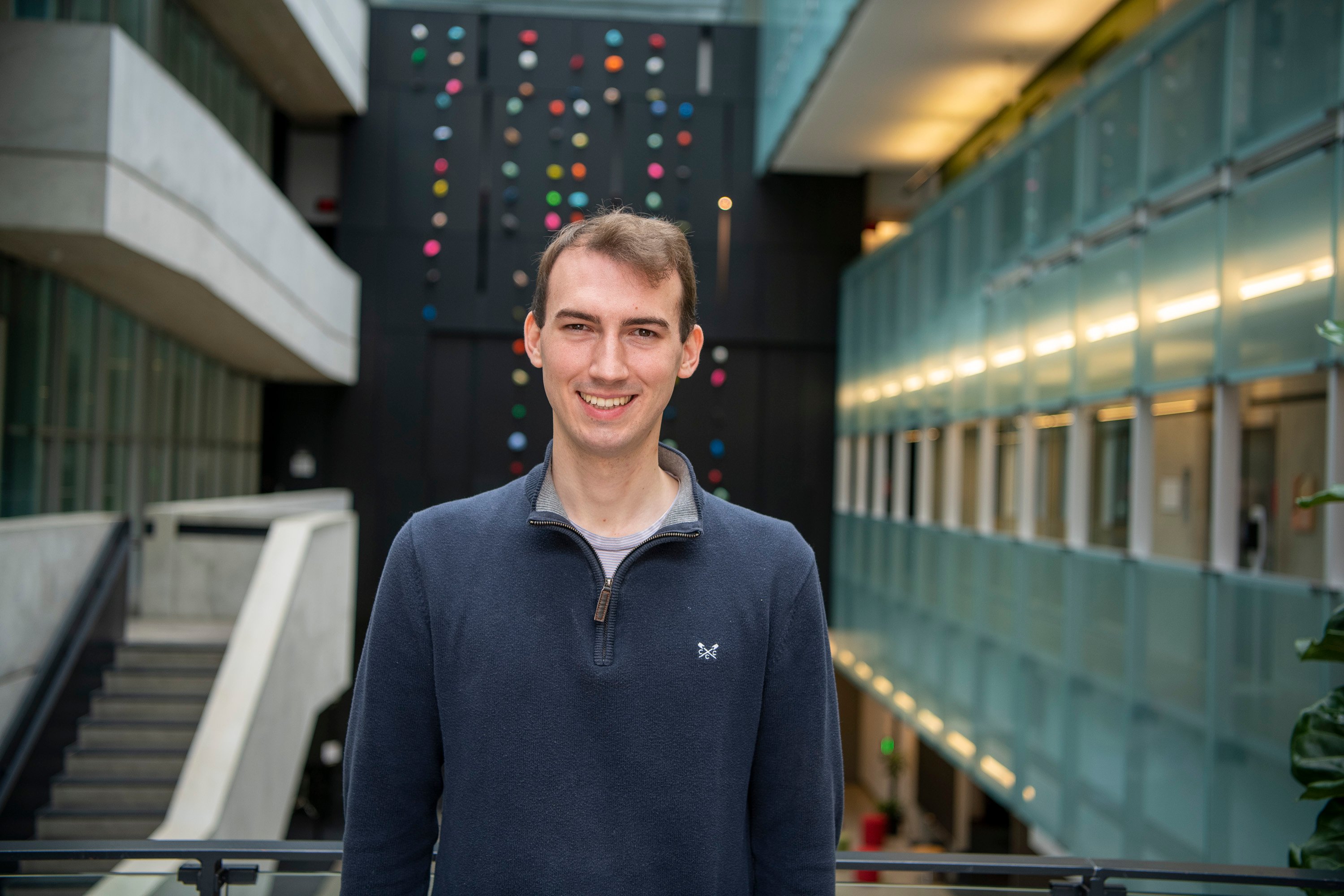“Philosophy [i.e., natural philosophy or nature] is written in this grand book – I mean the universe – which stands continually open to our gaze, but it cannot be understood unless one first learns to comprehend the language and interpret the characters in which it is written. It is written in the language of mathematics, and its characters are triangles, circles, and other geometrical figures, without which it is humanly impossible to understand a single word of it; without these, one is wandering around in a dark labyrinth.”
Galileo Galilei
Il Saggiatore (The Assayer) (1623)
If we were to imagine our cosmos as a beautifully patterned Persian rug, and examine its fine details, we would be unwittingly entering the realm of mathematics.
We would see symmetries. The patterns on one side of the rug repeating, in seemingly precise order, on the other side. If it were a round rug, we would be able to rotate it and see how it looks the same. But we might also see imperfections, small breaks in the symmetry that enhance its beauty. Looking deeper, we might also see some surprising symmetries: hidden, unexpected delights.
Our cosmos is much like that. As Eugene Wigner, a Hungarian American theoretical physicist and mathematician once said, “The miracle of the appropriateness of the language of mathematics for the formulation of the laws of physics is a wonderful gift which we neither understand nor deserve.”
At Perimeter, we are pattern seekers. In the 25 years since the Institute’s launch, it has become world renowned for training students and growing the field of mathematical physics, so that we can better understand nature at the largest and smallest scales.
The Krembil Foundation has been a key partner in this effort. It has supported two of Perimeter’s highly prolific faculty members: Davide Gaiotto, a theoretical physicist who holds the Krembil Galileo Galilei chair, and Kevin Costello, a mathematician who holds the Krembil William Rowan Hamilton Chair.
Together, they have been working on some of the toughest problems in theoretical physics, while also supervising postdoctoral researchers and training dozens of graduate students in the field of mathematical physics.
In doing so, they are building a new generation of talented young people who will work at institutions in Canada and around the world to solve some of the deepest mysteries in nature.
Math and physics as dance partners
Mathematics and theoretical physics have long been in a symbiotic relationship, and one could describe the two fields as dance partners, sometimes drawing nearer; at other times pulling apart.
If one goes back to the time of Archimedes, Galileo or Newton, there simply wasn’t the distinction between disciplines that we have today. They were polymaths, whose curiosity drew them across wide-ranging fields of study.
Archimedes, widely regarded as one of the greatest mathematicians of ancient history, was also a physicist and an engineer who, among other things, designed catapults. Centuries later, Galileo was a “renaissance man” who studied both mathematics and physics and achieved fame as an astronomer. Likewise, Newton was a mathematician, physicist, astronomer, alchemist and theologian. In his time, physics was called natural philosophy and it broadly encompassed all that could be known about nature.
But as human knowledge grew and technology became more sophisticated, especially during the industrial revolution and into the 20th century, disciplines began to pull apart and became more specialized.
After the Second World War, mathematics and physics seemed to go their separate ways. Mathematicians became more formal and focused on the beauty of their craft. Theoretical physicists began working with Feynman diagrams and with the data from particle colliders that were being built.
“There was more experimental data available and so they had other sources of information,” Costello says.
This story is chronicled in Graham Farmelo’s book, The Universe Speaks in Numbers: How Modern Maths Reveals Nature’s Deepest Secrets. He describes “the long divorce” between physics and mathematics during the period from the 1940s to the 1960s.
Since then, the two disciplines have drawn closer again. New and increasingly sophisticated mathematical concepts in algebra, geometry and topology are needed to tackle some of the toughest unresolved questions. Mathematical physics grew out of that need. It is a discipline that seeks to develop and enhance the mathematical theories and tools needed to describe and model physical phenomena.
Costello says mathematical physicists play an especially crucial role in the areas of theoretical physics where the computations are extremely difficult.
Good examples are research associate faculty members Alexander Braverman and Ben Webster who developed mathematical tools to do calculations about "monopole operators" in certain quantum field theories, which physicists did not know how to do before.
Costello’s own career began in an area of mathematics known as algebraic geometry. When he got his PhD and began working as a postdoctoral researcher, in the early 2000s, string theory was making surprising predictions that didn’t just touch on physics but also on algebraic geometry. “Mathematicians became interested in working on the consequences of these predictions and verifying them,” Costello says. “This got me very excited about physics, and I wanted to learn where these ideas came from, so I started studying quantum field theory and string theory.”
At Perimeter, a major focus of Costello’s work is quantum integrability, which is all about finding exact solutions to complex and seemingly intractable problems in quantum physics.
When physicists use quantum field theories to understand the complex and chaotic interactions in the heart of atoms, for example, it is not easy to get mathematical models with exact solutions. In fact, it can be almost impossible, even with computers. It is a bit like trying to predict the movement of billiard balls on a pool table. As one adds more variables and more balls, the mathematical problems grow to the point that even a super-fast computer can’t solve them. The mind-boggling quantum realm is like that, except much harder.
This is where the skills of a mathematician such as Costello can help. He can develop simplified models in lower dimensions that can be analyzed exactly, and then applied to higher dimensions.
Costello has also worked with Gaiotto on what they call “twisted holography.”
Holography is one of the most fascinating and important insights from the theoretical physics of the last 30 years. It makes use of a “holographic duality” that connects a negatively curved region called anti-de Sitter (AdS) space to a quantum description of particles called a conformal field theory (CFT), on that region’s boundary. By connecting a lower dimensional particle theory to a higher dimensional space that includes gravity, it is analogous to a hologram, where an image on a flat two-dimensional surface can look like a three-dimensional image. That is why it is called the holographic principle.
The holographic principle is a promising bridge between the two most successful theories in modern theoretical physics: Albert Einstein’s theory of general relativity, that beautifully describes gravity as smooth curves in the geometry of spacetime in our universe; and quantum theory, which describes the interactions of discrete particles in the quantum realm.
But like all models, it has its drawbacks, the main one being that we don’t live in a negatively curved anti-de Sitter space.
Based on the information about the density of the universe that we have gained from instruments like the Planck satellite, it seems the universe is geometrically almost flat. So, there is a huge effort to develop a holographic model that gets us closer to what we think the real universe looks like.
There is an entire field of study at Perimeter, known as the celestial holography initiative, led by faculty member Sabrina Pasterski, that is attempting to do just that.
Costello is part of that, but recently he has also worked with Gaiotto and other colleagues on twisted holography, a type of holographic duality that has been "twisted" by a mathematical operation. By combining twisted holography with celestial holography, one can get closer to a model of the universe that we actually live in.
Ultimately, Costello sees the rigour of mathematics as “an important tool for keeping theoreticians honest.”
Pedro Vieira, who holds the Clay Riddell Paul Dirac Chair supported by the Riddell Family Charitable Foundation, is also trying to apply mathematical rigour to areas of physics where speculative theories run rampant, such as the mysteries of black holes.
Black holes can be thought of as laboratories where gravity and quantum theory intersect. It is important to every field of study in physics to understand what happens when you enter a black hole. But since we cannot see inside them, the current theories are based on a lot of assumptions.
“I want to try to transform some of these very grandiose, speculative and inspiring questions into very concrete, sharp – boring even one could say – mathematical computations,” Vieira says.
Vieira also teaches a non-credit minicourse to graduate students and postdoctoral researchers at Perimeter about ‘beautiful’ papers in physics.
The course alternates between lectures on nine influential papers and student-led presentations about how these monumental papers influenced physics. Students in every area, from condensed matter to mathematical physics, are enjoying the course and making connections within it. It is an example of Perimeter’s multidisciplinary, collaborative environment.
Likewise, Gaiotto holds a weekly "QFT/Strings Office Hours" course directed at graduate students that also has a multidisciplinary audience and a choice of topics.
Perimeter’s training in mathematical physics is already having an impact on institutions across the country.
Theo Johnson-Freyd, for example, is now an associate professor of mathematics at Dalhousie University in Halifax, as well as an associate faculty at Perimeter. Prior to going to Dalhousie, he was a postdoctoral researcher in mathematical physics at Perimeter and was a co-author on a series of influential papers with Gaiotto.
Perimeter is going on the road across the country throughout its 25th anniversary year, co-hosting public events and lectures. The first stop, which is in part a celebration of mathematical physics, is in Halifax.
Johnson-Freyd says Perimeter, an environment steeped in theoretical physics, is a unique place for budding mathematicians.
“Being able to have a physics environment in which to do mathematics is really great. For me, being surrounded by theoretical physics was a really nice way to stimulate a lot of mathematics ideas,” Johnson-Freyd says.
Mathematicians are trained to see big picture patterns and can help theoretical physicists sort out not just whether a statement is true but add new insights by discovering why it is true, he adds.
Part of what Johnson-Freyd works on is category theory, the study of mathematical structures and their relations. In physics, this is useful in the study of quantum phases of matter or condensed matter theories, and also in quantum information and quantum computing.
He is now, in turn, extending the training in mathematical physics to his graduate students based at Dalhousie and Perimeter.
Current postdoctoral researchers at Perimeter, such as Roland Bittleston, are the new generation of mathematical physicists. Bittleston, who came to Perimeter from Cambridge University, is working with Costello at the intersection of integrability, twistor theory, and quantum field theory.
Like Costello, his work concerns three and four-dimensional counterparts of two-dimensional solvable models.
Bittleston says these new mathematical tools are important to physicists. Historically, physicists have relied on perturbation theory, which is a mathematical method used to find approximate solutions, building bit by bit toward solving more complex problems. But even perturbation theory is not mathematically well understood, he says.
Now, mathematicians are looking deeper into mathematical structures and are finding surprising new insights that will simplify the work, he adds. “We can perform calculations in the models that would be extremely difficult by other means,” he says ”
Institutions all around the world have mathematics and physics departments, but Perimeter is unique in the way that it intermingles the two, Bittleston adds. “It is one of a kind,” Bittleston says.
It’s a powerful combination. In the book, Love and Math: The Heart of Hidden Reality, author Edward Frenkel speaks of the power of mathematics in scientific progress:
“Math is a way to describe reality and figure out how the world works, a universal language that has become the gold standard of truth. In our world, increasingly driven by science and technology, mathematics is becoming, ever more, the source of power, wealth, and progress. Hence those who are fluent in this new language will be on the cutting edge of progress.”
About PI
Perimeter Institute is the world’s largest research hub devoted to theoretical physics. The independent Institute was founded in 1999 to foster breakthroughs in the fundamental understanding of our universe, from the smallest particles to the entire cosmos. Research at Perimeter is motivated by the understanding that fundamental science advances human knowledge and catalyzes innovation, and that today’s theoretical physics is tomorrow’s technology. Located in the Region of Waterloo, the not-for-profit Institute is a unique public-private endeavour, including the Governments of Ontario and Canada, that enables cutting-edge research, trains the next generation of scientific pioneers, and shares the power of physics through award-winning educational outreach and public engagement.
You might be interested in



Battle of the Big Bang: New Theories Changing How We Understand the Universe
June 5, 2025

